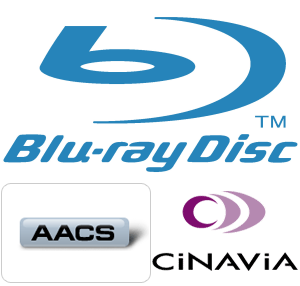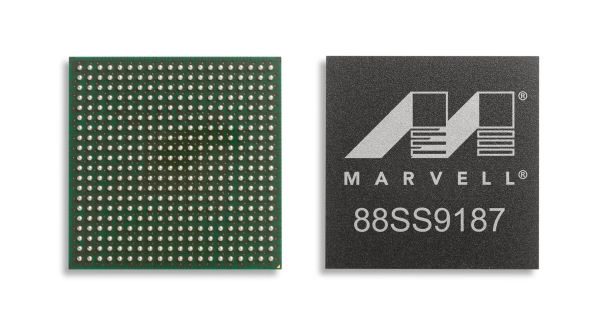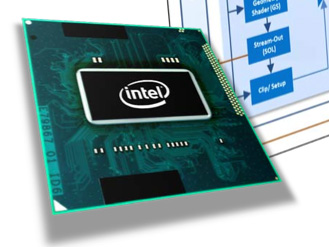 Many IT managers have been hearing about the benefits (low power, high IO bandwidth, low latency) of adding SSDs to their existing system to improve IO speed and application performance. They have also heard about some of the issues associated with adding SSDs such as high cost, device wear and data organization disruption. Still, SSDs are here to stay and the list of vendors and products is getting bigger every day. The easiest way to take advantage of the SSD benefits is to deploy SSDs as cache. However, even doing something that sounds that simple can waste this valuable resource. Enter the concept of SSD caching software. SSD caching software is used to seamlessly manage the data flow to the SSD to maximize the ROI of this expensive technology.
Many IT managers have been hearing about the benefits (low power, high IO bandwidth, low latency) of adding SSDs to their existing system to improve IO speed and application performance. They have also heard about some of the issues associated with adding SSDs such as high cost, device wear and data organization disruption. Still, SSDs are here to stay and the list of vendors and products is getting bigger every day. The easiest way to take advantage of the SSD benefits is to deploy SSDs as cache. However, even doing something that sounds that simple can waste this valuable resource. Enter the concept of SSD caching software. SSD caching software is used to seamlessly manage the data flow to the SSD to maximize the ROI of this expensive technology.
sexta-feira, 30 de março de 2012
Using SSD Caching Software to Boost Storage I/O Speed and Application Performance
Cinavia DRM: How I Learned to Stop Worrying and Love Blu-ray’s Self-Destruction
DRM (Digital Rights Management) is intended to protect media from being played in an unauthorized manner. However, more often than not, it fails to serve the purpose. Today, we will take a detailed look at Cinavia, a DRM mechanism which has recently become mandatory for all Blu-ray players to support.
We will see how Cinavia is different from other Blu-ray DRM mechanisms, and find out whether it will actually help in reducing media piracy. In almost all cases, it is the law-abiding consumer who is put to much inconvenience. Will Cinavia be doing the same? While we are on the subject of Blu-rays, we will also try to identify areas where user-friendliness can be improved and how consumers can get the best possible experience from them. Read on for our opinion piece..
Novo iPad chega a 46°C em teste, 10,5°C a mais do que iPad 2 - Terra Brasil
Christian Post em Português | Novo iPad chega a 46°C em teste, 10,5°C a mais do que iPad 2 Terra Brasil A organização americana de defesa do consumidor Consumer Reports disse nesta terça-feira que o último tablet da Apple, o iPad de terceira geração, esquenta muito mais que a versão anterior durante a transferência de arquivos ou a execução de videogames ... Novo iPad tem problema de compatibildade com Smart Covers antigas Superaquecimento do novo iPad gera reclamações nos EUA Apple não reconhece problema de superaquecimento de seu novo tablet |
Seagate Reaches 1Tb Per Square Inch Milestone In Hard Drive Storage
Seagate Promises 60TB Hard Drives Next Decade
sexta-feira, 16 de março de 2012
Western Digital Ships Its First 4TB, 6TB Storage Systems with Thunderbolt Interface
WD Begins to Ship 4TB, 6TB External Hard Drives with Thunderbolt Interface
Apple’s New Retina Display: Do All Those Pixels Matter?
URL: http://www.wired.com/gadgetlab/2012/03/ipad-retina-display-comparison/

At 2048 x 1536, the new iPad has the highest pixel density of any tablet to date. Photo: Christina Bonnington/Wired
Apple is calling the screen in its third-generation iPad a “Retina display,” even though the new screen’s pixel density is significantly less than that of the display in the iPhone 4 and 4S. Sure, the new iPad beats all competing tablets in terms of screen resolution, but if you hold a new iPad next to an iPhone 4S, how do they compare?
Dr. Raymond Soneira, creator of the DisplayMate screen calibration utility and a leading expert on display quality, aims to erase the confusion. On March 19, he’ll be publishing an “iPad Retina Display Shootout” that includes an in-depth analysis of the new iPad’s ultra-high-resolution display. Here are are some highlights we pulled from a brief preview of the analysis, which Soneira published Wednesday.
To start, Soneira addresses the fact that the iPhone 4/4S Retina display has a pixel density of 326 ppi (pixels per inch), whereas the new iPad comes in at just 264 ppi. “To qualify as an Apple retina display, the new iPad does not require the same ppi as the iPhone 4 Retina display because it is typically held further away from the eye,” Soneira writes. (In case you were wondering, the original iPad and iPad 2 have a pixel density of 132 ppi.)
Considering the distance an iPad is held from one’s face — 15 to 18 inches as opposed to 12 to 15 inches with the iPhone — the iPad could have a pixel density as low as 240 ppi, and still be considered a Retina display by Apple’s standards, Soneira writes. He also notes that given the average recommended distances we sit from 1080p TVs (6 feet for a 46-inch set; 8 feet or more for a 60-incher), these large-screen devices would be considered Retina displays as well — at least by Apple’s definition.
In his shootout preview, Soneira also challenges the notion that we even need a Retina display in the new iPad. He points out five reasons:
- Most adults don’t have true 20/20 vision, which the Retina display is optimized for.
- If you’re holding the iPad further than 18 inches from your eyes, you’re not at the optimal distance to appreciate the display’s high resolution — “that high resolution is wasted.”
- Photographic images are “inherently fuzzy, with the sharpest image detail spread over multiple pixels.”
- Improving sub-pixel rendering, and ordinary full pixel rendering (Apple’s approach), is actually the most efficient way to improve display sharpness.
- Most people are perfectly happy with display resolutions below 1600 x 1200 on their notebooks and desktop monitors.
Despite these factors, Soneira says, consumers should still notice a big difference between the new iPad, the iPad 2, and other tablet competitors.
All text (small text in particular) will be much improved, reducing the need to zoom in for legibility. High-quality photographs will also be rendered with much greater noticeable detail. And the new iPad’s 9.7-inch display — much larger than the iPhone’s 3.5-inch screen — will help you better appreciate high-resolution images in all their showy brilliance.
Attached media file [image/jpeg] (20000 bytes)
Attached media file [image/jpeg] (20000 bytes)
quinta-feira, 15 de março de 2012
AC and DC Battle For Data Center Efficiency Crown
jfruh writes "AC beat DC in the War of the Currents that raged in the late 19th century, which means that most modern data centers today run on AC power. But as cloud computing demands and rising energy prices force providers to squeeze every ounce of efficiency out of their data centers, DC is getting another look."
Read more of this story at Slashdot.
Marvell's 3rd Generation 88SS9187 SSD Controller
URL: http://www.anandtech.com/show/5676/marvells-3rd-generation-88ss9187-ssd-controller
terça-feira, 13 de março de 2012
IBM's New Optical Chipset Delivers 1Tb/s Transfer Speed
IBM's "Holey Optochip" Sets Optical Data Transfer Record
domingo, 11 de março de 2012
Intel to Integrate PCI Express 3.0 Support into Thunderbolt
Intel Outlines Thunderbolt Target: PCI Express 3.0
Nvidia GeForce "Kepler" to Offer Dynamic Overclocking
Nvidia's Next-Generation Graphics Card to Have Turbo Boost-Like Technology
SSD Per-GB Cost to Fall Below $1 in Second Half of 2012 - Market Observers
SSDs to Gain Considerable Market Share This Year, Says DRAMeXchange
Insolvency of Elpida May Boost Memory Pricing and Help the Industry
Bankruptcy of Elpida Will Help Others to Improve Positions
sábado, 10 de março de 2012
X79 Motherboard Roundup: ASRock, ASUS, Gigabyte
URL: http://hothardware.com/Reviews/X79-Roundup-ASRock-ASUS-Gigabyte/
 Intel’s X58 chipset made for great platform performance, and even though the chip maker has unleashed many more chipsets since the X58 came out, there hasn’t been a true successor in the high-end of their product line-up (not even the Z68 chipset) until now. The X79 chipset looks to pick up the X58’s poll position, so we...
Intel’s X58 chipset made for great platform performance, and even though the chip maker has unleashed many more chipsets since the X58 came out, there hasn’t been a true successor in the high-end of their product line-up (not even the Z68 chipset) until now. The X79 chipset looks to pick up the X58’s poll position, so we...
ASUS Technical Summit: Intel 7 Series Motherboards
URL: http://hothardware.com/Reviews/ASUS-Technical-Summit-New-Motherboards-Lots-We-Cant-Tell-You-Yet/
The Ivy Bridge Preview: Core i7 3770K Tested
URL: http://www.anandtech.com/show/5626/ivy-bridge-preview-core-i7-3770k
I still remember hearing about Intel's tick-tock cadence and not having much faith that the company could pull it off. Granted Intel hasn't given us a new chip every 12 months on the dot, but more or less there's something new every year. Every year we either get a new architecture on an established process node (tock), or a derivative architecture on a new process node (tick). The table below summarizes what we've seen since Intel adopted the strategy:
| Intel's Tick-Tock Cadence | |||||
| Microarchitecture | Process Node | Tick or Tock | Release Year | ||
| Conroe/Merom | 65nm | Tock | 2006 | ||
| Penryn | 45nm | Tick | 2007 | ||
| Nehalem | 45nm | Tock | 2008 | ||
| Westmere | 32nm | Tick | 2010 | ||
| Sandy Bridge | 32nm | Tock | 2011 | ||
| Ivy Bridge | 22nm | Tick | 2012 | ||
| Haswell | 22nm | Tock | 2013 | ||
Last year was a big one. Sandy Bridge brought a Conroe-like increase in performance across the board thanks to a massive re-plumbing of Intel's out-of-order execution engine and other significant changes to the microarchitecture. If you remember Conroe (the first Core 2 architecture), what followed it was a relatively mild upgrade called Penryn that gave you a little bit in the way of performance and dropped power consumption at the same time.
Ivy Bridge, the follow-on to Sandy Bridge should be a tick but because of significant improvements on the GPU side Intel is calling it a tick+. We managed to get our hands on an early Ivy Bridge system and ran it through some tests to determine exactly how much of an improvement is coming our way in a couple of months.
Read on!
sábado, 3 de março de 2012
Hitachi Deskstar 5K4000 Review
URL: http://www.storagereview.com/hitachi_deskstar_5k4000_review
 The Hitachi Deskstar 5K4000 represents the first major leap in hard drive capacity we've seen in over a year. The 5K4000 provides 4TB of bulk storage coupled with Hitachi's CoolSpin technology to deliver quiet and power-friendly operation. Along with big capacity, the 5K4000 gets an updated SATA 6Gb/s interface, 32MB cache buffer and delivers media transfer rates up to 162MB/s.
The Hitachi Deskstar 5K4000 represents the first major leap in hard drive capacity we've seen in over a year. The 5K4000 provides 4TB of bulk storage coupled with Hitachi's CoolSpin technology to deliver quiet and power-friendly operation. Along with big capacity, the 5K4000 gets an updated SATA 6Gb/s interface, 32MB cache buffer and delivers media transfer rates up to 162MB/s.
Battle At $140: Can An APU Beat An Intel CPU And Add-In Graphics?
URL: http://www.pheedcontent.com/click.phdo?i=a2ec4dd72635e30983853d7d6da82f82
 What can you get for $140? How about AMD's top-of-the-line A8-3870K APU with four CPU cores and an integrated Radeon HD 6550D? That's also enough for a Pentium G620 and discrete Radeon HD 6670. We benchmark both to uncover the best budget-oriented option.
What can you get for $140? How about AMD's top-of-the-line A8-3870K APU with four CPU cores and an integrated Radeon HD 6550D? That's also enough for a Pentium G620 and discrete Radeon HD 6670. We benchmark both to uncover the best budget-oriented option.








